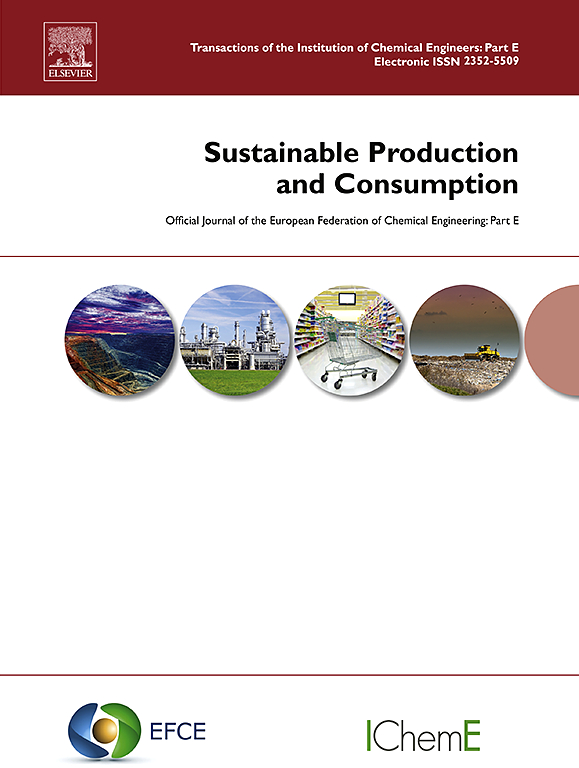将用户感知纳入可修复性指数的需要:来自小型电气设备观察性研究的见解
IF 9.6
1区 环境科学与生态学
Q1 ENVIRONMENTAL STUDIES
引用次数: 0
摘要
维修是推进循环经济的一项关键战略,因为它延长了产品寿命,减少了电子垃圾。现有的可修复性指数评估修复的潜力,尽管它们通常侧重于专业修复,往往忽略了最终用户的修复活动。这在理解非专业用户如何体验和感知可修复性方面造成了研究空白。小家电由于结构相对简单,有时是由用户自己维修,而不是送到专业维修机构。本研究通过探索用户对小型电气和电子设备的可修复性的看法,并检查他们与计算的可修复性指数的一致性,有助于缩小这一差距。进行了一项用户观察研究(n = 26),以评估维修过程的三个关键阶段:(1)与完全组装的器具的初始交互,(2)打开过程,以及(3)与内部组件的交互。观察性研究设计包括一个旨在标准化参与者程序的方案,以及结构化的规则,以确保反应解释的一致性。这种严格的方法方法确保了再现性,并能够对用户行为进行详细的探索。结果揭示了用户感知和可修复性指数之间的不一致,对于两种特定设备,与计算值相比,感知可修复性得分下降了约35.9%和58.8%。此外,在观察研究期间,确定了以下关键障碍:内部组件的可及性有限,特别是打开产品的难度,以及故障识别的复杂性。这些发现强调了以用户为中心的障碍,如与设计相关的挑战(即打开设备)和感知的复杂性,与当前可修复性指数中考虑的标准有很大不同。此外,研究结果强调需要通过改进设计来解决以用户为中心的维修挑战,提高可访问性和简化拆卸,最终促进消费者更多地参与维修活动。本文章由计算机程序翻译,如有差异,请以英文原文为准。
The need for incorporating user perception into the repairability indices: Insights from an observational study on small electrical devices
Repair is a key strategy in advancing a circular economy, as it extends product lifespan and reduces electronic waste. Existing Repairability Indeces assess the potential for repair, although they often focus on professional repairs, often overlooking end-user repair activities. This creates a research gap in understanding how non-professional users experience and perceive repairability. Small household electrical appliances, due to their relatively simple architecture, are sometimes repaired by users themselves rather than taken to a professional repair service. This study contributes to closing this gap by exploring users' perceptions of repairability in small electrical and electronic equipment and examining their alignment with calculated repairability indices. A user observation study (n = 26) was conducted to evaluate three critical stages of the repair process: (1) initial interaction with the fully assembled appliance, (2) the opening process, and (3) interaction with internal components once accessed. The observational study design included a protocol designed to standardise procedures across participants, and structured rubrics to ensure consistency in response interpretation. This rigorous methodological approach ensured reproducibility and enabled a detailed exploration of user behaviour. The results reveal a misalignment between users' perceptions and repairability indices, with perceived repairability scores decreasing by around 35.9 % and 58.8 % compared to the calculated ones, for two specific appliances. In addition, during the observational study, the following key barriers were identified: limited accessibility to internal components, particularly the difficulty of opening the product, and the complexity of fault identification. These findings highlight how user-centered barriers, such as design-related challenges (i.e. opening the appliance) and perceived complexity, differ significantly from the criteria considered in current repairability indices. Furthermore, findings emphasise the need to address user-centred repair challenges through design improvements that enhance accessibility and simplify disassembly, ultimately fostering greater consumer engagement in repair activities.
求助全文
通过发布文献求助,成功后即可免费获取论文全文。
去求助
来源期刊

Sustainable Production and Consumption
Environmental Science-Environmental Engineering
CiteScore
17.40
自引率
7.40%
发文量
389
审稿时长
13 days
期刊介绍:
Sustainable production and consumption refers to the production and utilization of goods and services in a way that benefits society, is economically viable, and has minimal environmental impact throughout its entire lifespan. Our journal is dedicated to publishing top-notch interdisciplinary research and practical studies in this emerging field. We take a distinctive approach by examining the interplay between technology, consumption patterns, and policy to identify sustainable solutions for both production and consumption systems.
 求助内容:
求助内容: 应助结果提醒方式:
应助结果提醒方式:


